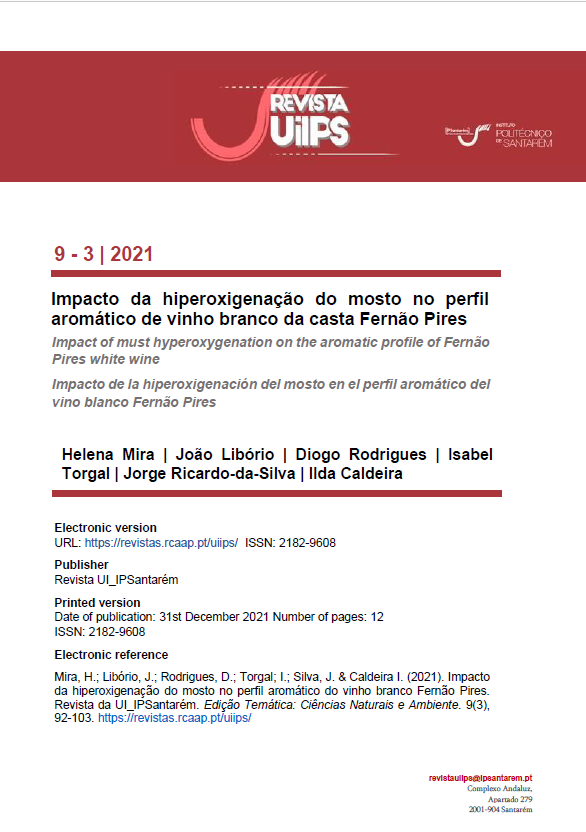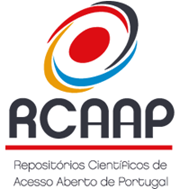Impact of must hyperoxygenation on the aromatic profile of Fernão Pires white wine
DOI:
https://doi.org/10.25746/ruiips.v9.i3.26205Keywords:
hyperoxygenation, volatile compounds, sensory analysisAbstract
This work intended to evaluate the impact of must hyperoxygenation on the aromatic profile of Fernão Pires variety. After grapes pressing, the must was hyperoxygenated, with a Vivelys micro-oxygenator, at two different levels of oxygen: 7 mg/L and 14 mg/L, for 6 hours. The must control was only sulphited. The fermentations took place at a controlled temperature of 15ºC. After the liquid-liquid extraction with dichloromethane from the wine samples, the obtained extracts were analyzed by high resolution gas-liquid chromatography coupled with mass spectrometry (CG-MS). The wines obtained were also subjected to sensory analysis. There was an increase in the content of ethyl acetate, isoamyl acetate, ethyl 3-hydroxybutyrate, ethyl decanoate, ethyl monosuccinate and ethyl hexadecanoate, and of most alcohols with the increase in the oxygen dose applied, especially isoamyl alcohols and 2-phenylethanol. Hyperoxygenation negatively affected terpenes alcohols (linalool and α-terpineol) and benzene compounds such as benzyl alcohol and 4-vinylguaiacol, contrary to what was observed for most fatty acids. The sensory analysis did not reveal significant differences between the wine modalities for olfactory attributes and taste attributes. There were only significant differences for the overall quality. The tasters considered that the wine subjected to the highest dose of oxygen and the control wine had better overall quality.

Downloads
Published
How to Cite
Issue
Section
License

This work is licensed under a Creative Commons Attribution-NonCommercial-NoDerivatives 4.0 International License.
Authors publishing in this journal agree to the following terms:
Authors retain copyright and grant the journal the right of first publication, with the article simultaneously licensed under the Creative Commons Attribution License that allows sharing of the work with acknowledgement of authorship and initial publication in this journal.
Authors are permitted to enter into additional contracts separately for non-exclusive distribution of the version of the article published in this journal (e.g., publish in an institutional repository or as a book chapter), with acknowledgment of authorship and initial publication in this journal.
Authors have permission and are encouraged to publish and distribute their work online (e.g., in institutional repositories or on their personal webpage) at any point before or during the editorial process, as this may generate productive changes, as well as increase the impact and citation of the published work.




